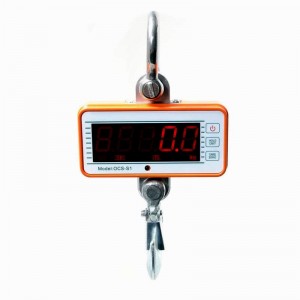For anyone operating lifting equipment, which can be in a whole range of industries, lifting safety will be at the forefront of your minds. Whether it’s huge industrial operations, or it’s just small one-time jobs, proper precautions and safety measures must be in place to ensure a smooth and accident-free operation.
Because of this, a range of additional tools and lifting gear have been created to help those planning these operations to make them more safe. Crane scales are one such type of tool, and we’ve have explained their importance below.
What are crane scales?
Crane scales are a type of load and force calculation equipment, and are used to help prevent workers from overloading their lifting apparatus beyond its capabilities. This is one of the main reasons for accidents, and so its crucial that it is taken seriously. The crane scale is fitted onto the crane/hoist hook onto which the load is then attached. The scale will accurately determine the weight of the load once test lifted just clear of the ground. You will then know if your equipment can handle the load safely.
Using crane scales
Loads can come in a wide range of weights and it’s important to factor this into any operation
A crane scale is a type of weighing device that generally features a scale, with an eye loop on the top and a hook on the bottom. The top eye loop allows the scale to be hooked onto a crane, while the hook at the bottom means that a load can be attached to the scale.
This is done so as to test lift a static load to see exactly how much it weighs. A test lift is conducted by lifting the load just off the floor, and will then provide an accurate reading on weightage. With this information, you will know whether your crane is suitable to the task or not, as you will have been provided with a safe working load (SWL) by your manufacturer.
Crane scales in the shipping industry
The most common usage for this equipment comes in the shipping industry, particularly in ports and dockyards. This because the shipping containers often found in this industry will vary hugely in weight, and crane scales can quickly provide the accurate reading needed.
However, it’s not just this industry where crane scales are popular, and you will find them in any industry where cranes and other pieces of lifting gear are present. Warehouses and distribution centres can find them highly beneficial, or anywhere that handles a wide variety of load sizes and weights.
Crane scales are now highly modern, and you will find that they have easily readable LCD screens, and are constructed from materials that can work in hazardous environments. We have a range of this piece of equipment from different manufacturers and that operate in slightly different ways.
To discuss these further and to find out which may be the right one for you, you can find Lifting Gear Directs contact details at the bottom of this page.
Why is lifting safety important?
So just why are crane scales so important? Of course there is the more obvious point that they provide a complete accurate reading. This, in turn, will ensure that you keep your equipment in a good working condition, and that you keep your workers safe.
But another reason is that the guidelines most commonly used for lifting equipment, the Lifting Operations and Lifting Equipment Regulations 1998 (LOLER), require all operations to be properly planned and safe.
This means that it’s not only common sense to ensure all operations are planned properly, but it’s actually part of the law too. For that reason, it is best to do everything possible to stay on the right side of the law!
Are you looking to make your operation safer?
If you would like to discuss any of the above information, or would like to chat about how you can make your own lifting operation safer, then that’s what we’re here for!
Posted On: February 26, 2018
